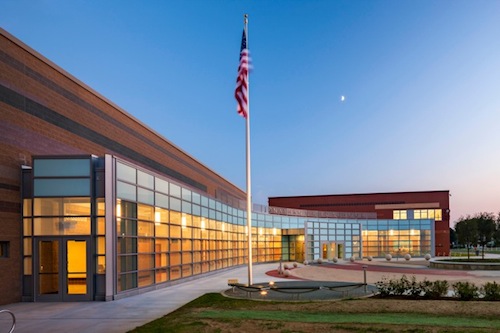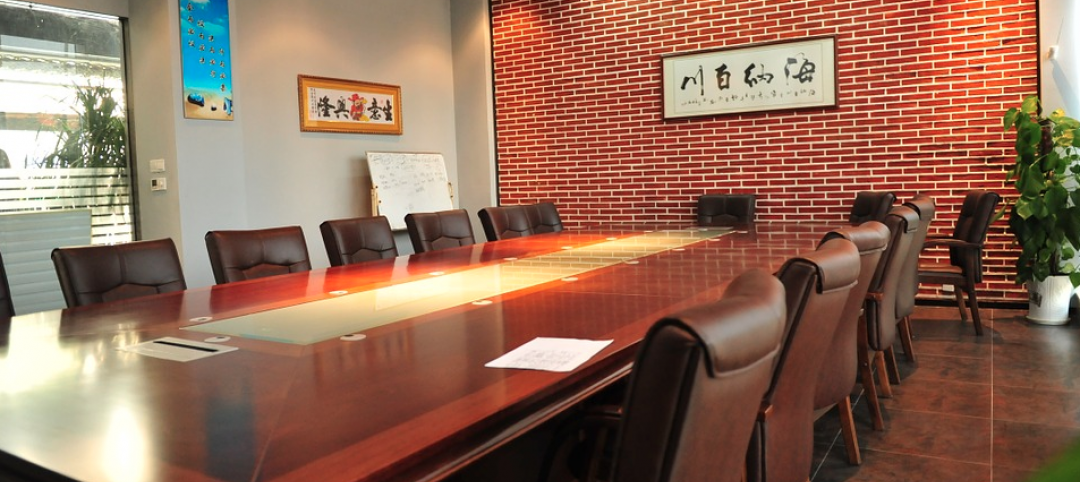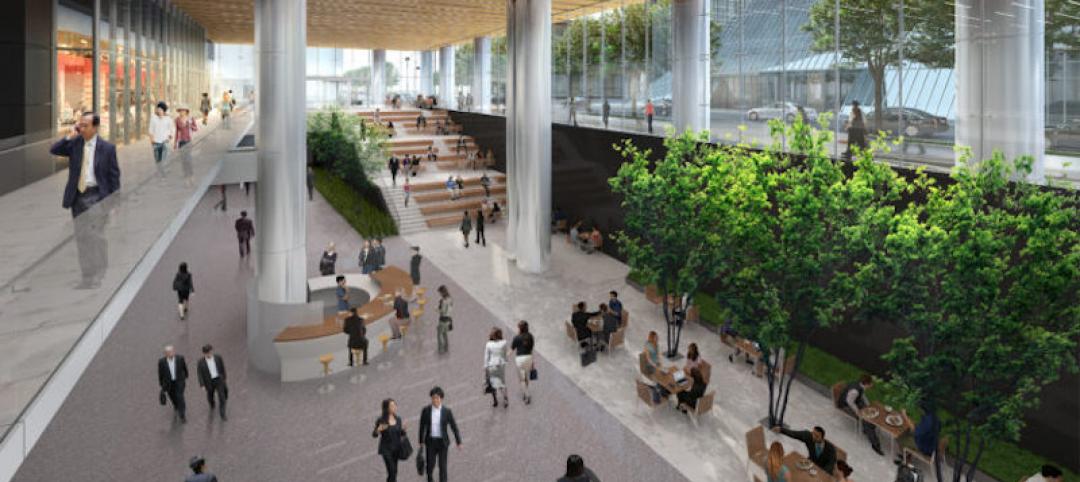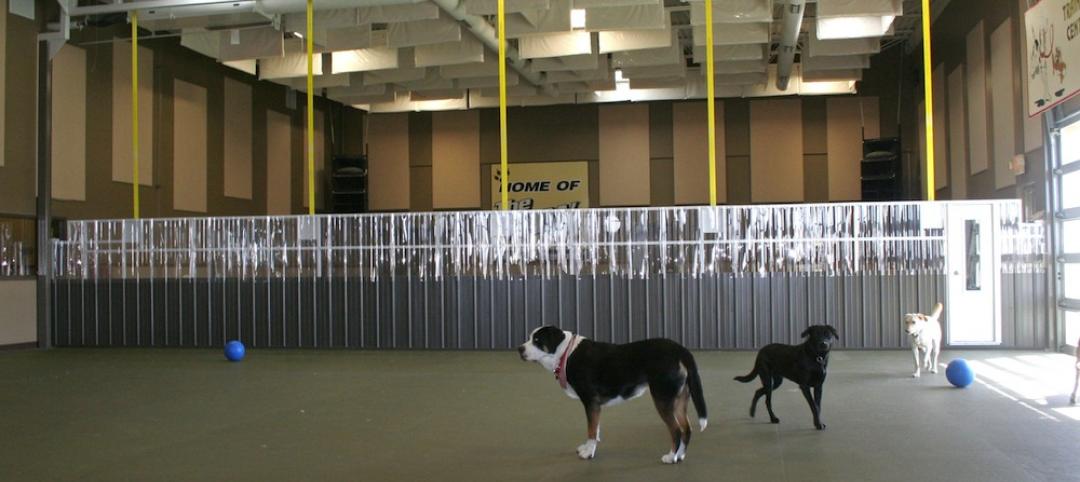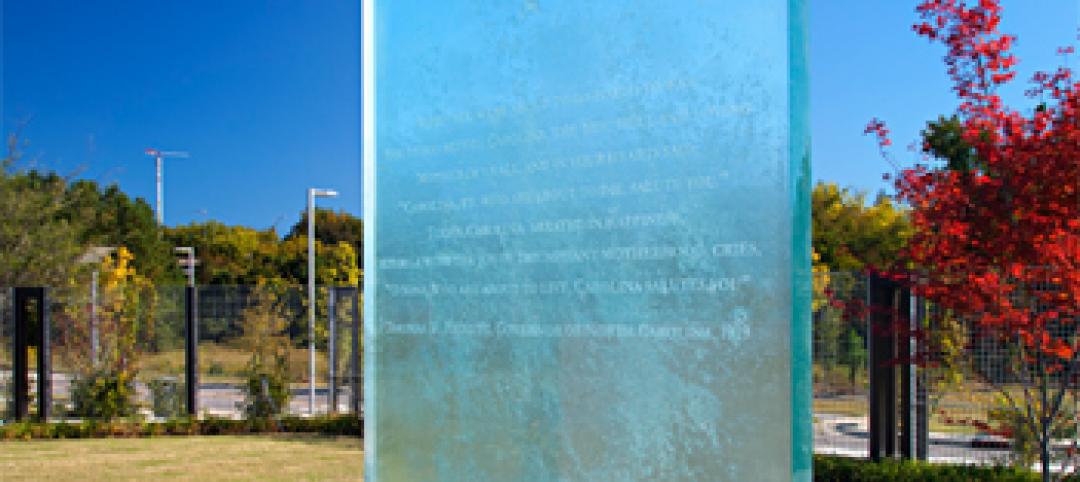WATERBURY, CONN. – Residents of this New England town are discovering that an elementary school can teach valuable lessons and restore a measure of civic pride through architecture and art.
Designed by New Haven-based architecture, art and advisory firm Svigals + Partners, the new Jonathan K. Reed School not only fills the need for excellent school facilities but also creates a new centerpiece for the surrounding community. Built in a blighted area, the new school opened for classes last fall, enlivening the entire neighborhood.
For a town that boasts a long history of manufacturing watches and clocks, the legacy and loss of that heritage now serves as a touchstone for the new school project, informing the facility’s architecture.
Designing the Reed School, Svigals + Partners engaged local leaders and families to use art and sculpture to restore that legacy to the town, and its youngest generation. The resulting facility features original artwork evoking themes of time, across the façade and inside the school.
“The Waterbury Clock Company, which eventually became a Timex plant, was a major presence in Waterbury for over a century,” says Barry Svigals, FAIA, founding principal of the award-winning design firm. “So it seemed appropriate to consider the theme of time as part of the school's overall educational theme.”
Design by Community
Svigals and his team began the process of designing the 550-student, 79,800-squarefoot facility by engaging the local school officials, parents, teachers and students in an early-phase discussion of program needs. The firm’s role was not only to provide architectural and design services for the Reed School, but also to develop the educational specifications for Reed and two more new school facilities planned for the city of Waterbury. Svigals + Partners also was asked to share the firm’s deep experience participating on such projects in an advisory capacity.
Using a proprietary method for engaging multiple stakeholders in complex projects and finding opportunities to leverage the contributions of individual endeavors, Svigals + Partners was able to discern what was important about the local heritage, and begin to map out how it would be incorporated. “As we have done with other buildings,” says Svigals, “we arrived at a theme, and we attempted to root that theme deeply into the architecture, through the use of integrated artworks and other design elements.” The chosen theme – ideal for a city known for clock makers – was time. “But we chose to develop images that represent cycles of time, as opposed to linear time,” he says. “It’s important to this community that their children think about time not in a habitual way but rather through this notion of cycles.”
Many of these images are tied to the curriculum of the K-8 school: The four seasons, the phases of the moon, tidal flow and the cycles of day and night. Images conveying these themes have been crafted from brass and installed as panels, or medallions, in the building's brick exterior. The result brings the curriculum to life in a playful, memorable way.
The choice of brass also related to the watch-making town, says Svigals, and even today many residents still refer to Waterbury as “the Brass City.” One major sculptural element to grow out of this process depicts a child’s hand holding a watch, emerging from water. The large piece is installed high on the corner of the façade overlooking the sprawling entrance plaza, and it is meant to evoke not only the theme of time generally, but also two important aspects of Waterbury's heritage: the Waterbury Clock Company and the Naugatuck River.
A Focal Point
Visitors to the school are immediately greeted by a reminder of theme of time. “Along the 240-foot-long facade, we created timelines in the brick,” notes Svigals. “Changes in color and patterning suggestive of time’s passage.” These timelines each terminate in one of the sculptural brass medallions.
The design of that façade and entry plaza were also planned to help establish a way to engage the local community through civic space. Built on the site where until recently stood a gas station and dry cleaner, the school grounds now unify several neighborhoods by making the area connecting them more pedestrian-friendly. The school will also often serve as a meeting and gathering place, in a region that has had little community meeting space before. As of its opening, the facility often opens its doors after-hours for use as a gym, meeting space, auditorium and more, serving a number of local groups for seniors, children and other residents.
Even more importantly, the location has created a “neighborhood school,” one where the majority of its students live within walking distance. In keeping with this spirit of the school as a place of community, Svigals + Partners recently worked with school leaders to organize a mural-painting event for kids, teachers and parents to participate in. Working from a design by Svigals, participants in the event worked to decorate an entire wall of the school cafeteria with an abstract timeline composed of images evoking the Naugatuck River and clockwork gears.
Proud, and Green
Part of what allowed the introduction of this type of school in this location was the need for a comprehensive site remediation strategy. Previous use of the land – gas station, dry cleaner – contaminated the ground leaving it a brownfield site. The construction administrator, Svigals + Partners architect Bruce Wujcik, calls the proposed site “a blackfield” because it was in far worse condition than an official brownfield when the project began. Site remediation and aggressive cleanup measures became a part of the K-8 school’s new green, sustainable design.
Other green-building features include automated lighting that maximizes the use of natural daylight while minimizing energy consumption as well as a white roofing membrane installed to reduce solar heat gain and related energy needed to cool the classrooms. Even the polished concrete floors, featuring graphics evocative of the "river" theme, are green – as well as attractive, and requiring little maintenance.
But the true source of pride for this post-industrial community is the school design, covered with sculpture and imagery that set apart from any other. For teachers, the school has an intrinsic ability to teach, helping students see daily that they are part of something larger than themselves. “All of the ‘cycles of time’ themes in the sculpted pieces are an attempt to remind students, and anyone who goes to the school, that they are participating in these cycles and affected by them,” says Svigals. “Our sensitivity to them enhances a sensitivity to everything in our lives.”
"Everything is related,” he says.
Other Building Team members included Dimeo Construction Co. (CM), Michael Horton Associates (SE), BVH Integrated Services (MEP), Bruce Spiewak, AIA Consultants (code consultant), Clarence Welti Associates (landscape), Lynn Brotman Interior Design (interiors, FF&E), and Randall Hoyt (art/graphic design).
More from Author
BD+C Staff | Jan 5, 2018
In the age of data-driven design, has POE’s time finally come?
At a time when research- and data-based methods are playing a larger role in architecture, there remains a surprisingly scant amount of post-occupancy research. But that’s starting to change.
BD+C Staff | Nov 6, 2017
How to start a negotiation: Begin as you mean to continue
How you start a negotiation often will determine where you end up, writes negotiation and mediation expert Brenda Radmacher.
BD+C Staff | Apr 19, 2017
Embracing the WELL Building Standard: The next step in green
When you consider that 90% of our time is spent in buildings, how these environments can contribute to workplace productivity, health, and wellness is the logical next step in the smart building movement.
BD+C Staff | Dec 17, 2014
ULI report looks at growing appeal of micro unit apartments
New research from the Urban Land Institute suggests that micro units have staying power as a housing type that appeals to urban dwellers in high-cost markets who are willing to trade space for improved affordability and proximity to downtown neighborhoods.
BD+C Staff | Jun 12, 2014
Zaha Hadid's 'gravity defying' Issam Fares Institute opens in Beirut
The design builds upon the institute’s mission as a catalyst and connector between AUB, researchers and the global community.
BD+C Staff | Jun 11, 2014
David Adjaye’s housing project in Sugar Hill nears completion
A new development in New York's historic Sugar Hill district nears completion, designed to be an icon for the neighborhood's rich history.
BD+C Staff | Jun 11, 2014
Bill signing signals approval to revitalize New Orleans’ convention center corridor
A plan to revitalize New Orleans' Convention Center moves forward after Louisiana governor signs bill.
BD+C Staff | Jun 19, 2013
New York City considers new construction standards for hospitals, multifamily buildings
Mayor Michael Bloomberg’s administration has proposed new building codes for hospitals and multifamily dwellings in New York City to help them be more resilient in the event of severe weather resulting from climate change.

